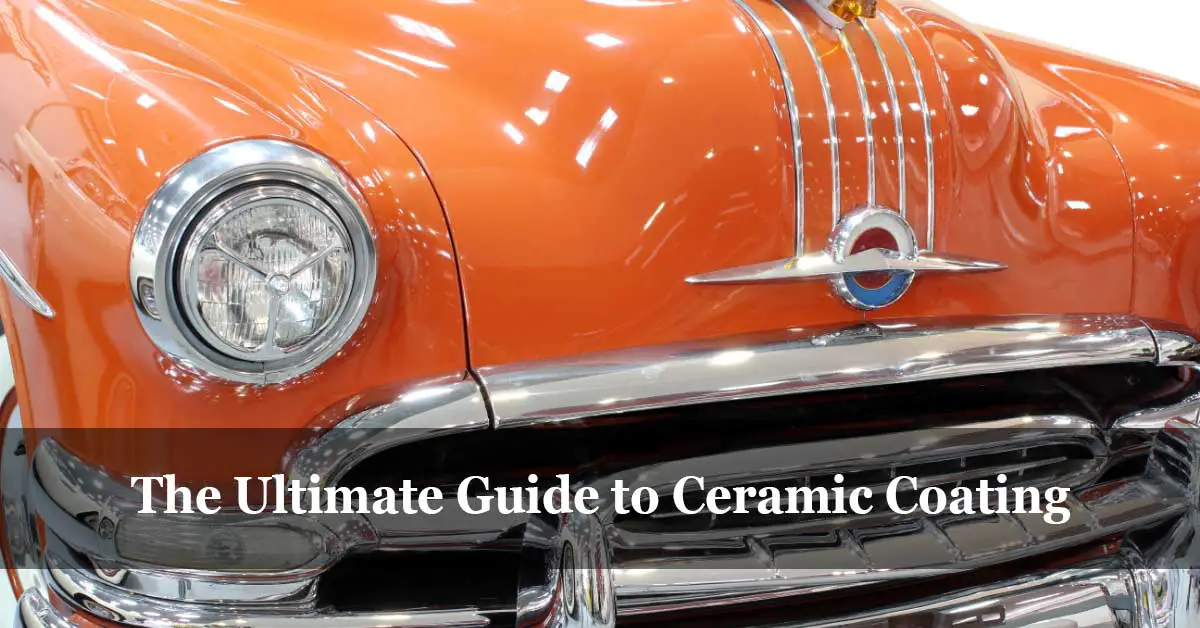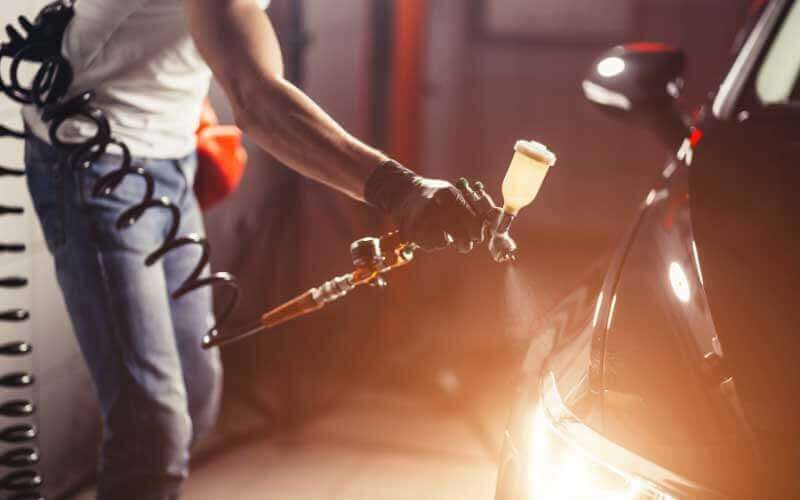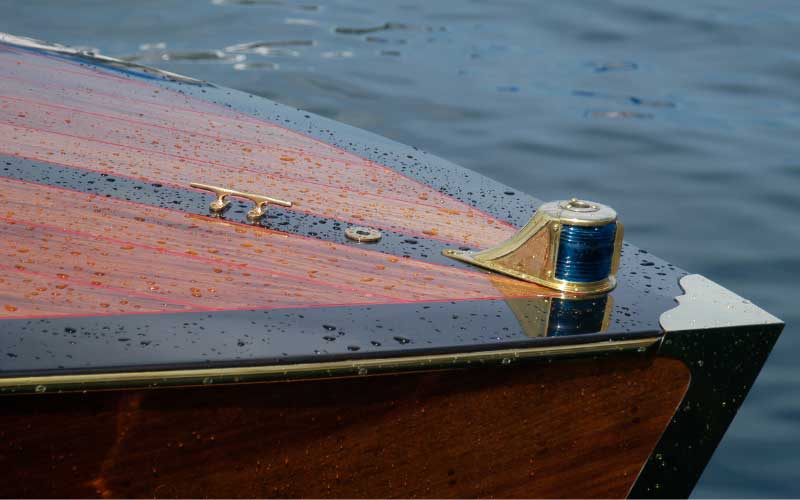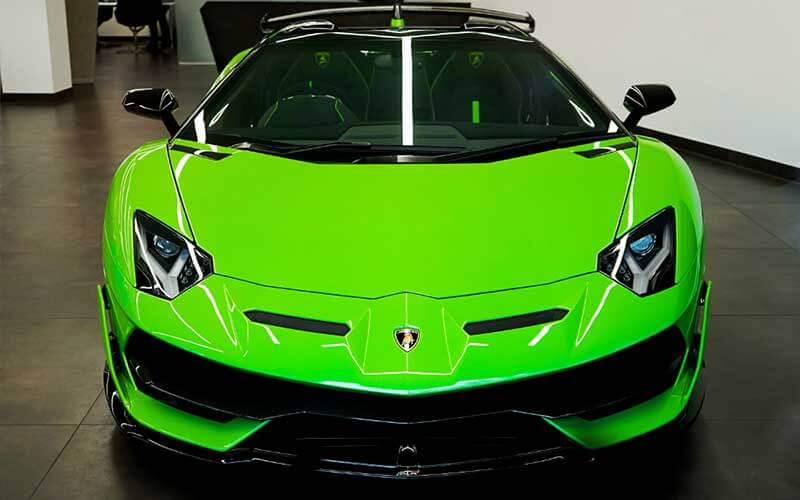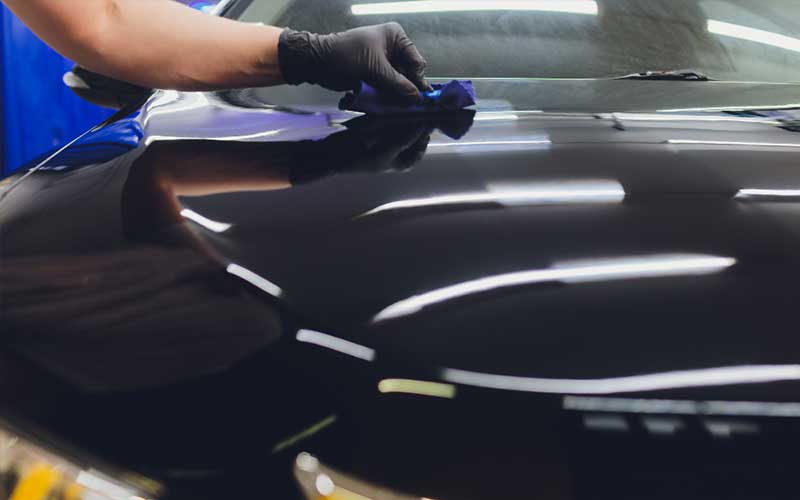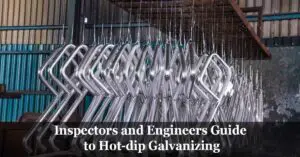When you hear about ceramic coating, the first thing that comes to your mind is car paint job protection. However, its benefits not only work for automobile lovers and enthusiasts.
After applying this silicon-based coating, a thin and translucent layer will remain attached to the surface of any industrial asset. This material layer helps to prevent corrosion and protects the device from abrasion.
In the following article, we are going through everything you need to know about ceramic coatings, including their various application methods and regular uses.
What is Ceramic Coating?
Advanced ceramic materials have become a point of interest in the latest century. Their importance comes from their excellent thermal and electric properties. Ceramic coatings offer the complete insulation of an asset protecting it from hazardous environments.
In recent years, advanced post-fabrication techniques consisting of applying ceramic material to a surface have been developed. This material attaches to it and provides long-lasting protection.
Ceramic coatings exploit the benefits of those ceramic materials, creating a strong protective layer that will not come off with ease; in fact, it can withstand almost any chemical, and it also provides high resistance to abrasion.
The main component of a ceramic coating product is silicon, the same material used in solar panels. However, this does not mean that it will generate electricity for you; silicon has minimum electrical conductivity. Silicon allows for a better attachment of the ceramic coatings to any type of surface.
Applying this post-fabrication technique will not only increase the durability of your equipment. This is because the attached material layer is not only thin but transparent too. Ceramic coating transparency gives a striking bright appearance to any painted surface.
These ceramic materials also work as a waterproof film. It minimizes the effects of water and mud on your bodywork due to an effect known as water-droplets concentration. This means that any external agent will come off easier from your paint.
How to Apply Ceramic Coating?
There are two methods used to apply a ceramic coating protective layer to, let us say, a vehicle or any industrial asset found in an unsafe environment. Pressure spraying is one of those methods, and as its name suggests, it consists of directly spraying the coating mix to the surface. Think about it as a post-paint job treatment to improve its durability.
The second method involves a liquid coating. When coating the surface with this liquid, as if it was wax, not only the durability of your paint would increase. You will also provide an anti-scratch shield that isolates the surface and diminishes damages caused by rocks, branches, dust, and sand.
The liquid is popularly used in cars for its lower cost. It also provides a brighter appearance to the color of your vehicle.
Differences
Of course, there are differences between these two methods. The most remarkable is that after applying the sprayed coating, the protective layer becomes thicker, which prominently increases abrasion resistance. Besides, this ceramic coating process is performed with ease and takes less time to do so.
Nonetheless, the spraying and self-protection equipment required has a higher cost. Also, the process requires an experienced hand to obtain the best results. Thus, making sprayed ceramic coating the most expensive method only reserved for industrial assets.
On the other side, liquid coating costs considerably less. It could be easily applied by yourself if you are one of those guys who loves taking care of their vehicle. On the other hand, a lower cost also takes away a considerable amount of material from being attached to the surface. This results in a thinner layer that will not withstand as much abrasion as the sprayed one.
However, this thinner layer will still protect your vehicle and enhance its appearance giving it a brighter look. This method takes more time, and it still requires proper ventilation and a low moisture environment to come up with a high-level finishing.
Ceramic Coating Applications
You may be wondering: why would I need to apply a “car product” to industrial equipment? First of all, it is not a car care product. Ceramic coatings are the result of years of research in composite materials. It is important to know that it has a variety of uses outside the automotive industry.
For example, the ceramic coating is used to protect the inspection windows of CNC equipment. The main reason for this is that these windows are in danger of being hit by debris of shattered cutting tools, partially affecting the inspection process.
Surface discontinuities and constant exposure to direct sunlight are some of the main corrosion mechanisms. Those industries in which equipment is located in open-air environments, such as oilfields, apply a ceramic coating finishing to valves, electric motors, and piping systems. This does not only increase durability but guarantees the correct functioning of automatic equipment.
In these situations, it is likely that wind also carries small particles of sand and dust, which are a prominent abrasion mechanism. The painted surface of any mechanical device works as a shield isolating its exterior from the environment. And its purpose is to prevent oxidation, electrically isolate and avoid external damages caused by debris in case of an accident.
The ceramic coating works as an efficient tactic to extend the paint’s durability, which means that the costs related to replacing piping equipment will be reduced.
The furniture industry often applies ceramic finishing to products such as jars, vases, and cups. Other metallic objects such as doorknobs, handles, switches, and ashtrays require this kind of coating too. It is needed because they are used often, meaning that they suffer from external wear.
Sprayed ceramic coating virtually fits in every kind of industry. For boats and yachts protection purposes, it is applied to structures above and below the waterline. It is a priority in these industries to maintain boats and yachts’ structural members in excellent and presentable condition.
Ceramic Coating for Cars
The automotive industry is the perfect place for ceramic coatings. Their popularity comes from the fact that car owners do not like dirt, mud, and scratches, and this technique aids in preventing all of them.
Car manufacturers, dealerships, and maintenance experts accept that they are a powerful tool and even sell vehicles with these coatings to offer a better product and attract more customers. From sports cars to buses, they all benefit from this material layer.
Usually, the primary application method used in the automotive industry is liquid coating. Liquid coating is preferred because of its lower cost and the fact that it can be applied by the owner. It is regularly administered piece by piece. This can be done because of the unique components and their transparency. No lines or patterns should be noticed on the surface once it is applied, so it will not even matter if you take a pair of days to complete your vehicle’s coating process.
Another essential characteristic is its impermeability. Water seldomly sticks into a surface that was treated with this technique. In the rare case that water stops flowing, it will look like concentrated droplets that come off with ease, needing only a piece of microfiber cloth to wipe them out.
Why is its impermeability so important? Neither mud nor dirt will stick to the surface of your car.
Our vehicles are often parked outdoors, where direct UV, road debris, and other vehicles attempt to damage ours. The ceramic coating protects our paint most of the time from considerable impacts depending on the layer’s thickness.
Prolonged exposure to UV light tends to damage our car’s paint job while increasing corrosion chances. The main effect that UV light has on paint is that it tends to burn the surface. This causes small paint zones to clarify, considerably affecting our vehicle’s appearance.
The protective layer obtained after applying a ceramic coating reflects 90% of UV light, meaning that damages caused to our vehicle’s paint job will be substantially reduced.
How long does ceramic coating last?
Another interesting fact is that unless exposed to high amounts of abrasion, the coating layer simply will not come off. For a car whose maintenance and other sorts of care are properly taken, a ceramic coating may last more than two years. This before being worn enough for you to remove it entirely.
Removal of ceramic coating is only possible by abrasion. Washing your car will not affect the protective layer. You can even apply any kind of aesthetics enhancer without worrying about wearing the coating.
If the coat is worn enough and ready for a replacement, to remove it is necessary to apply a mixture of clay and iron dust remover. This method is very efficient, but you could use a grinder polisher and wax the surface to remove the coating layer.
These are just some of the reasons why ceramic coatings are very popular between car lovers and enthusiasts. One of the best things about these coatings is that they enhance your automobile appearance while providing protection to your paint job. Car collectors use a ceramic coating to protect their relics when exposing them to the public.
Ceramic Coating Benefits
First of all, when we talk about preserving surfaces, we have to keep in mind that the exterior could be the most endangered zone of our vehicles or equipment. The external surface of a device is regularly exposed to the environment and manipulation by other people. In the means of avoiding scratches in a parking lot and the need to keep our car protected from nature, ceramic coatings offer a variety of protection mechanisms.
1. Anti-scratch protection
In a perfect world, we would not have to worry about scratches nor superficial defects on our paint job. We might not even have to worry about washing our vehicles. Unfortunately, we are not living in such a paradise.
Even when we park outside our house, a considerable risk for our paint to be damaged is present. Birds, leaves, branches, rain, and our neighbor’s kid playing with his soccer ball are just some of the threats we might encounter. The area around or door handle is also severely affected by scratches and grooves due to its constant use.
The ceramic coating offers a quite acceptable anti-scratch layer that works as a barrier taking all the possible damage caused.
The anti-scratch benefits are not only reserved for the automotive industry. For outdoors equipment, paint scratches and grooves act as a corrosion acceleration factor. Piping systems are often coated with this kind of material to protect them from abrasion, which leads to a rusted surface.
2. UV and chemical stains protection
Even though car products are meant to keep our vehicle’s appearance on point, some contain chemicals that in time will affect our paint job. This negative effect of car products is also boosted by continuous exposure to direct sunlight.
After applying this chemical-resistant material, any surface will be protected from UV light and acidic components that cause unattractive stains.
In the chemical industry, these coatings are applied to equipment, prolonging their durability, reducing costs, and ensuring a highly efficient process.
3. Ceramic coatings are waterproof
This means that water will slip from each coated area. Thanks to its hydrophobic characteristics, water and mud will barely stick to the surface, simplifying the cleansing of your vehicle.
This also acts as a paint protection mechanism. If water remains in contact with paint for long periods, it leaves dry stains above the surface. These stains not only affect the look of our car, but they also promote the corrosion mechanism that will rust your car’s bodywork.
In industry, having hydrophobic surfaces extends the duration of our equipment. Devices located outdoors, such as heavy-machinery, take advantage of this characteristic.
4. Provides a gloss-like brilliant appearance
When it comes to choosing car-care products, the best option is to select one that provides everything you need. Ceramic surface finishes are characterized by a brilliant-glossy appearance that highlights your paint job.
The only negative side of this characteristic is that, before applying the coating, your paint job must be in excellent condition. Any scratches, grooves, discolorations will be highlighted as well, ruining your car’s appeal.
Ceramic Coating Disadvantages
With all the benefits of applying ceramic coating on your car, boat, or any other asset, there are some downsides associated with the process. Knowing the downsides helps you decide whether the ceramic coating is suitable for you or not.
1. Difficult application
Well, at first sight, the ceramic coating requires a cleaned surface to avoid undesired results. Not only must it be clean, but it is also highly recommended that it is in perfect condition, meaning no scratches or damages. This is needed because rust, scratches, and other kinds of paint flaws will remain under the protective layer; Making them even more noticeable due to the bright ceramic finishing.
Another thing that ceramic coating requires is a non-humid environment to apply. Application of these types of coatings in humid, improperly ventilated zones such as garages are not suggested. Doing so may lead to a phenomenon known as bubbling. Bubbling is an improper finishing that will ruin your car’s appearance and lead to an unwanted oxide concentration.
2. Not suitable for outdoor
At last, these methods cannot be applied outdoor. Even though one of the main benefits of ceramic coatings is UV protection, these coating layers must not be given under direct sunlight. Sunlight increases the rate at which the coating dries on the surface, generating various imperfections and damaging the paint.
Another reason for not applying these processes outdoors is the wind, which carries dust and other kinds of small particles that will destroy your paint job.
3. High cost
The manufacturing process of ceramic coating is complicated and takes multiple steps to produce a high-quality product for offering a coating system that gives an effective barrier. All these lead to an expensive final product.
The challenges in the coating application require skilled labor to perform the application, which increases the total bill value.
The Performance of Ceramic Coatings when Compared with Other Types of Coatings
When comparing ceramic with the organic type of coatings such as epoxy and polyurethane, ceramic coatings exhibit superior thermal and UV protection characteristics. But abrasion resistance is not as good.
Organic coatings, particularly those which are polyurethane-based, have the highest mechanical resistance. However, polyurethane coatings required an expert hand and expensive equipment, which highly increases its cost.
One prominent advantage that ceramic coatings have over others is that they are completely translucent, making them applicable to glasses and windows. In time, as they wear off, visibility will not be affected.
The chemical resistance of ceramic coatings is superior to that of acrylics or epoxy-based. In fact, epoxy-based coatings tend to peel faster when exposed to direct UV light. On the contrary, the UV protection provided by ceramic coatings is remarkable.
In summary, ceramic coatings offer excellent protective characteristics as well as enhancing the surface appearance. This is the main reason why the automotive industry prefers it. However, its applications are not limited to the UV protection provided makes them an excellent choice for outdoor applications.
Truths and Myths related to Ceramic Coatings
Any type of information can be found on the internet, but it does not mean that all of it is true. Car product properties tend to be exaggerated in most cases to attract customers, simply because it is a marketing technique that does not harm.
Here are some popular myths about ceramic coatings:
Myth #1: If you use ceramic coatings, you will not need to wash your car for as long as the protective layer lasts.
Truth #1: This is entirely false. Ceramic coatings indeed create a protective layer of a hydrophobic material, but this does not mean that it will keep it clean. What it really does is concentrating dirt and water in easy to clean spots, meaning you will still need to wipe it with a microfiber cloth sometimes. However, to achieve a perfect look, you will have to take it to the car wash!
Myth #2: The protective layer can withstand any type of abrasion mechanism and heavy impacts before damaging your paint.
Truth #2: Ceramic coating can only withstand minimum abrasion mechanisms such as leaves, branches, keys, and other metals when not pressed too hard against the surface. If you purposely scratch too hard a coated zone with your keys, it will definitely damage your paint.
When it comes to impact protection, it may withstand other car’s doors, but only if not pushed too hard against your vehicle.
Myth #3: If applied on your windshield or windows, as the coating wears, it will not let you see clearly.
Truth #3: This is just another nonsense! Ceramic coatings are entirely translucent when it wears; the only way you will notice is that it will lose its glossy appearance. Ceramic coatings are even used on some eye-glasses to provide scratch resistance.
In fact, when applied to your windshield, ceramic coatings provide better visibility during snow and rain due to their hydrophobic condition.
Myth #4: It makes no difference to apply a sprayed or a liquid coating.
Truth #4: There are way too many differences when it comes to the coating method used. First of all, the coating layer is thicker when sprayed, improving durability as well as abrasion, impact, and corrosion resistance.
On the other hand, we have costs and equipment requirements. Liquid coating is basically a DIY activity that needs almost no special equipment. Also, the sprayed coating appears to be brighter.
Myth #5: Ceramic coatings will heal damage previously done to your paint.
Truth #5: As explained before, ceramic coatings will even make your car look worse if you apply them over a scratched surface. Think of it as a magnifying glass of your car’s imperfections.
Myth #6: Ceramic coatings are guaranteed to last.
Truth #6: the only one who can give you guarantee you this is the one who applies it. There are many factors to consider when applying this material, and if something goes wrong, it affects its durability and also its appearance. This is one of the main reasons why it is crucial to let an experienced hand do the job.
References:
- Avalonking Website Articles.
- Drivespark Website Articles.

